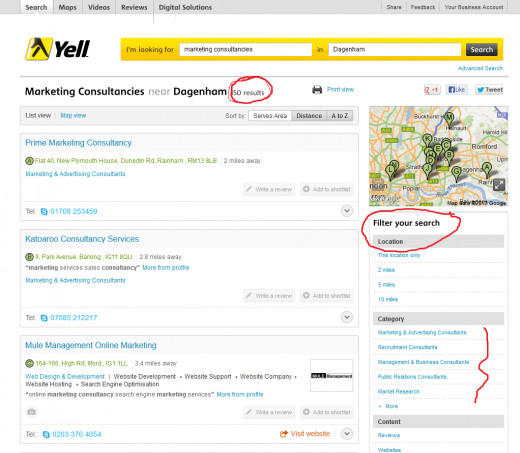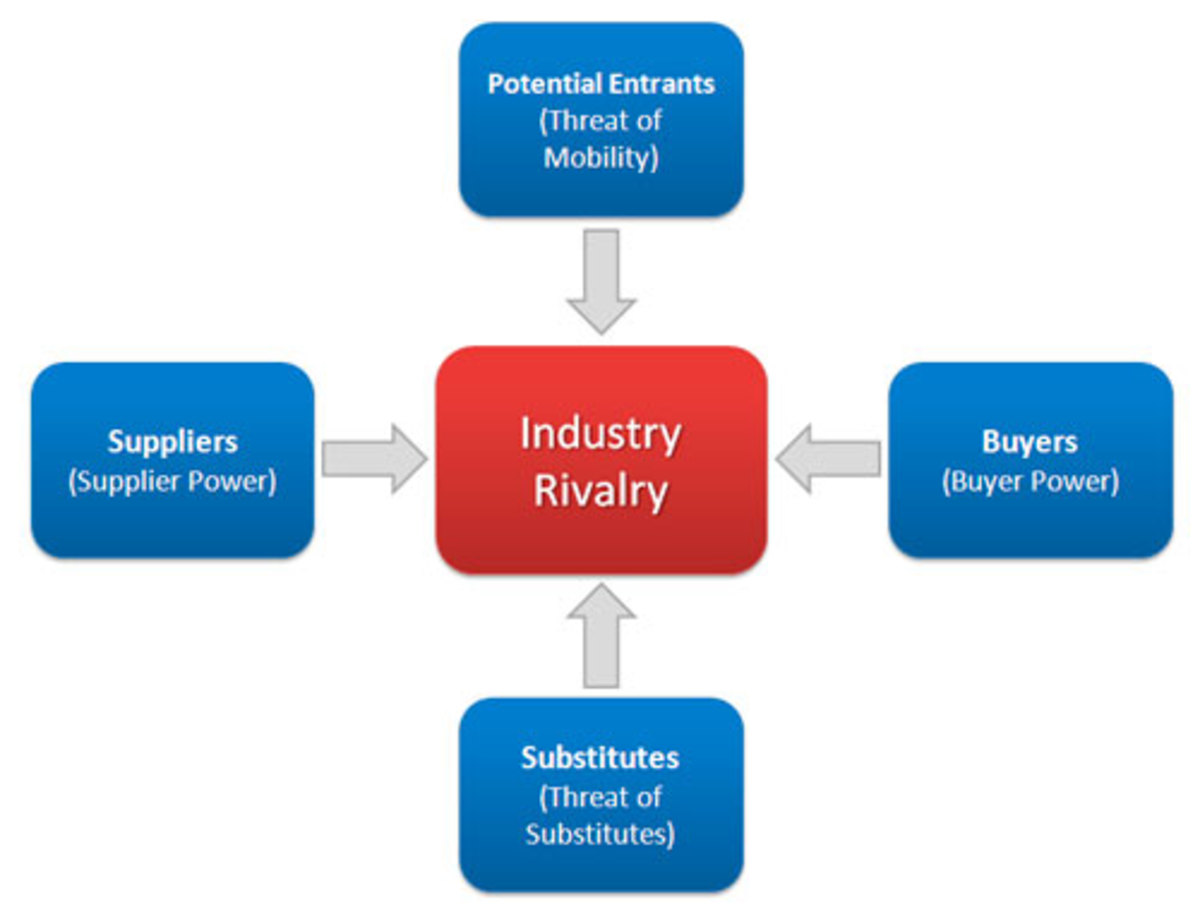SECTION 1.4 - Market Research and the Labour Market
MATCHING SHORT-TERM AND LONG-TERM GOALS
In Section 1.3 Job Seeking and New Career Ideas you discovered how to decide on a career that is satisfying and rewarding. Once you’ve gained some experience in mapping a path, you have a better idea where your career can head. One key source of motivation for most people is an understanding that their career will enable them to progress in terms of responsibility, training, money, and variety. It is important to cross reference our long-term and short-term goals – without these developments some jobs can feel like the career equivalent of a cul-de-sac. In other words, will this first step lead to a planned future or another dead-end? Dead-ends involve starting all over at the entry point of your profession and this usually entails a lower salary. You must think carefully about where a job can lead you in future, and the only way to do this is to look at career progression in the ‘market’ you are entering.
HOW TO MATCH LONG-TERM AND SHORT-TERM GOALS
Where do you see yourself in five years time? Most people try to plan where they aim to be in five years in one fell swoop. The following table will help you think about the future in terms of categories such as money, responsibility, health and so on. You’ll find that breaking it down like this makes planning ahead much easier.
- Be specific – do not just say ‘a job with progression’. Define what progression means to you, whether it is personal development, managing people or the chance to earn more money.
- Prioritise the categories. How high up is your health in terms of what you do one a day-to-day basis?
- The five whys: ask yourself why you want to achieve a certain goal and then question your answer. Keep questioning your answers until you feel you have significantly justified setting this goal and you understand why it is important to you.
- How realistic are your goals? Do any of your goals contradict each other?
- Do not expect to achieve all your goals simultaneously and don’t decide to be unhappy about a job because its only achieves eight of your nine goals.
- Do not expect to be able to do straight away or for your goals not to change.
- Once you have an idea about a chosen career, the next step is to start marketing yourself. The most important aspect of marketing and the element that most people forget about is research and analysis of your marketplace. Organisations that are good at marketing are not the ones that say they can help everyone, but rather those that identify their customers well and understand why their customers want their product or service.
- It is important to research where you are headed before you start your journey, making sure you have everything you need for a critical job.
- Many people do not understand the reason they can’t find a job is that there are no employers in the local area for their chosen career. A crude indication is that the more employers there are, the more jobs are available and the greater the chance you have of gaining employment. You should not necessarily give up your dream career because entry is competitive; instead try considering a different route in. for example, try finding a job in a related but less competitive field while you continue to apply for your dream career.
- The Yellow Pages will give you an indication of the number of local businesses there are in your chosen field. Not all businesses will be listed here, so think of other business directories you could use – there might be industry- specific directories online.
- Think laterally: for example if you want to get into accountancy don’t just look at accountancy firms. Councils, schools and other large companies may also be looking to employ finance-focused people.
Match Industry with Job Search Location

MARKET RESEARCH – ANALYSING INDUSTRIES AND UNDERSTANDING MY LABOUR MARKET
One of the main reasons people don’t know what career to follow is they don’t really know what’s out there. We have a very simplified view of the world regarding what’s out there and it doesn’t stack up with reality. We think of jobs in quite a vanilla sort of way. We look at industries like marketing, retail, banking and the like as the ‘major’ industries and have no real concept of all the possible company manifestations and types of careers that could be out there. For example, generic skills involving marketing are difficult to quantify because in theory all industries can use marketing.
If you know where you are going in life and have your mind fixed on a certain career you probably already have a list of organisations you know exist which could employ you. As a starting point this IS a good thing to do. If you really want to get into law then look for all the lawyers in your local area. If you want to go into marketing look into marketing agencies and so on.
But once you have done this, start from scratch to flush out all other organisations that could employ you. With marketing for example, there are all sorts of organisations that will use marketing that are not just agencies. How about food manufacturers, motoring traders, or travel companies? Try to think laterally and find other less trodden paths. Even the term “Marketing Agency” is a simplification and there could be lots of different types of organisations falling under this broad term.
1. A starting point is to look at all industries that exist and then see which ones could potentially use your skills as dictated by the Skills Analysis. Try to find about 30 to 50 so you can whittle them down as you go through this series on How To Find a Good Job.
2. Next is to work out how many companies exist in an area you feel comfortable commuting to. Go to Yell.com and key in the industry type and your location. Roughly count up how many results show up. Try a few other locations as the starting point and see if you have a good spread and variety.
3. Next you need to work out which industries are going to be paths of least resistance. There is little point in applying for jobs in an industry which is really hard to get into from a position of unemployment when there are other industries that use the same skills where you will have greater chance of success. Sure, you may want to build longer term goals and plan to move industries once you are in work and experienced— but the main objective here is to find the path of least resistance. We can do this by looking at the Five Forces analysis.
FIVE FORCES ANALYSIS
With your list of 30 — 50 industries that could use your skills you need work out 5 or so that would be relatively easy to get into. The model below will give you a structure to do this.
- 1. Local concentration of knowledge — How many organisations in this industry exist in your area? You should have done this in an earlier step using Yell or another on-line directory. If there is only a few it’s probably not worth considering it on your list. If there is 20 or so then it probably is. Knowledge is critical here; you might have to do a bit of digging to find out how many companies in the chosen industry exist. If you don’t know about them then it’s the same as them not existing!
- 2. Recruitment Process - Companies with a long formal stringent recruitment process are hard to get into. The shorter and more informal the recruitment process the better it is for you.
- 3. Qualifications and Experience - Some industries require very specific qualifications and experience. Some appreciate transferable skills and a different perspective. Check the company blog and information about employees. They often describe key personnel backgrounds and experiences. See how much transferable skills are evident, particularly if you are career-changing yourself.
- 4. Economic conditions - This is not the conditions of the economy as a whole but rather the particular industry or sector you are considering. Even during recessions there will be sectors and niche that will do very well.
- 5. Labour market competitiveness - Ultimately how many people are chasing the same jobs? Some industries will struggle to find staff simply because no-one really knows about them whilst others will receive 10 CVs a day. It is usually not worth submitting a CV to a job site if you can see that 50 applicants have already applied ahead of you. Would you read 50 CVs or stop when you had a short list of suitable candidates?
Ultimately as you analyse your list you will consider some industries to be a path of lesser resistance than others. Obviously a lot of this depends in terms of the types of jobs you apply for and the level. There will be some industries and companies that stand out as being much safer bets than others.
Ideally at the top of your list will be industries with a decent concentration in your area, weak recruitment process, no specific need for qualifications, good conditions economically with few people ever approaching them for jobs. These are the sorts of organisations where if you apply to them speculatively the interview process consists of them giving you a big hug and asking “When can you start?”

Make a list of 100 companies – Aim for 20 to start with.
Once you have looked at all the industries around you and got a true picture of the labour market, worked out the concentration of them, and then assessed which ones will be the path of least resistance you are now ready to look for actual companies.
Most people skip the foundations of this research and just pick up the yellow pages and tend to get a bit stuck because they haven’t done the first few steps. If you want to get into publishing for example, you will look in the Yellow Pages under “publishing”, find a handful of companies (most of which won’t be any good) and get the impression that there are 4 companies in your area that could employ you. Researching the industry list based on a skills analysis helps you think laterally. The skills involved in publishing involve a variety of skills that are used in many other industries and related industries (and could be pretty much the same job) such as digital marketing, event management etc. If you take short cuts you get a surface level view of the market and your job is to start from scratch and get a true picture of just who is out there that could use your skills based on your skills analysis.
So a good starting point is to get a decent spreadsheet to organise yourself. Aim to phone 20 companies up and ask if they have any vacancies based on your research results.
Where to research.
• Yell.com and other on-line business directories — there are hundreds!
• Trade directories such as Yellow Pages, Thompson but there are also more sophisticated paper based directories in reference libraries. You could also try Local Authorities and Councils for business directories and Chambers of Commerce near you.
• Trade Associations or Professional Bodies. As soon as you have found a niche or industry you want to approach there will be a trade association of professional body that represents them. Find them. If you are getting nowhere when phoning a company you could always ask the person you are talking to which organisation they regard as the professional body for the industry you want to get into. Never waste your time! Professional bodies will be a wealth of information and advice and often have job boards where potential employers advertise in your industry specialism.
• Trade publications — These are the rags that are produced by industry bodies and often end up on Have I Got News for You. Potato Buyers Monthly; Electric Light Post Admirers; that sort of thing. Again these are a wealth of data (albeit obscurely named), with press releases, information about movers and shakers, growing companies, direct telephone numbers and email addresses for key decision makers. This is the measure of really good research and pays off when you start finding this level of detail for a largely ignored industry. This makes your approach ten times easier.
Once you have a company in mind look at their website to see if you can get key contacts to address a speculative application to. Think about the size of the organisation and their ability to employ you. A market with twenty companies that have over fifty employees is better than a market of a hundred companies that are all one-man outfits.
Use the table below to keep records, or base your spreadsheet design on it.
Company Name
| Key Contact
| Telephone
| Website
| Your estimation of the number of employees
|
|---|---|---|---|---|
Try to achieve twenty company contacts at a time and continue to secure interviews.
In the next section of How To Find a Good Job you will be changing your CV to reflect your new approach to job search. Section 1.5 Job Search and the Perfect CV will show you how layout, style and what you emphasise in your CV can secure you an interview that will demonstrate your suitability for a new role.








